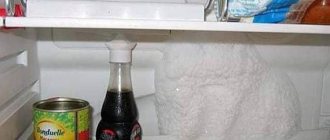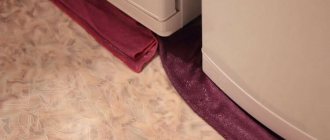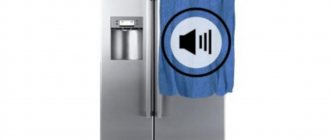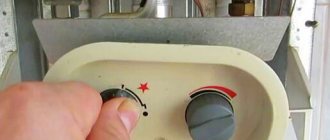Most of the operations discussed below are not recommended to be done on your own - simply prohibited. Compiles the work of gas service employees. You will be surprised: why provide information. Practice shows: there are people who want to make a spaceship with their own hands. To prevent anything from happening in the process, here is a thematic overview of the heavenly summers... that is, gas equipment. Do not consider it as a guide or instruction. A warning to those who decide to secretly find out why a gas stove smokes. Without calling the experts, he began to fight the problem. To prevent more troubles, read a couple of pages carefully. Soot from a gas stove... Let's try to figure it out...
Another master is like a hurricane. One took 600 rubles, simultaneously breaking the float of the toilet barrel in order to finalize the developer’s deficiencies. The second hooves pricked the tiles that were waiting to be grouted. (I was warned when I broke it - I blinked my eyes, asking: what is that crack?) Choose a master carefully.
Tales about gas and gas stoves
The stove is smoking, if something happens at the dacha, you have to call the service technicians. Specialists refuse to work on weekends and holidays; they need to cook urgently now; here is a brief overview of the problem of smoking stoves.
The gas stove smokes - there are two reasons:
- The gas contains excess sulfur impurities, which produces thick black smoke.
- The gas pressure is abnormal. Exceeds the nominal value of the plate and injectors. Residential main line pressure is low. By default, household appliances are designed to work in these conditions. More often, the problem terrorizes summer residents who connect their home gas stove to a purchased cylinder.
How to prevent the problem
People faced with the problem under consideration are interested in the question of what can be done to avoid the formation of soot. To prevent the stove from smoking, a number of actions should be taken.
- When installing the stove, you need to adjust the gas pressure from the source and to the burners.
- Find reliable suppliers of bottled gas and do not refuse the services of your usual company in order to save money.
- Keep equipment clean and periodically inspect the burners, especially after the contents of a pot or pan have overflowed and flooded the stove.
Summarize. At the dacha, in a private house or apartment, a gas stove is an indispensable assistant for those who value comfort and do not want to pay large sums for electricity. Problems with such equipment rarely arise, and soot on the bottom of the dishes is one of the most common reasons why owners turn to specialists. If you follow safety precautions, you can handle minor problems on your own. The main thing is to sensibly assess your capabilities and call a specialist on time.
Poor quality gas cylinder
Bottled gas contains sulfur impurities - the summer resident is free to complain to Rospotrebnadzor and other supervisory and monitoring organizations. He will provide a fuel receipt, a gas cylinder for analysis, and write a statement. Before the enterprise, make an attempt to complete the matter peacefully; the conditions of Russian reality increase the chance of confrontations.
The gas stove smokes - the contents of the cylinder are of poor quality. Let's work out the algorithm:
- You will have to resign yourself to swallowing the fact or try to relocate the cylinder, stove, where the soot is powerless to cause damage to property.
- Later we will contact the organization that filled the cylinder to explain the issue of excess sulfur.
- Seeing the seller’s lack of understanding of the situation, we complain, trying to restore justice.
If you have friends who have purchased gas from the organization, inquire in a friendly manner whether the gas stove smokes. One head is good, two are better. It is much more pleasant to while away the time with a friendly conversation than to silently wait in line.
When raising the alarm by blaming the gas supplier, read the review first. Perhaps the reason is limited to incorrect settings of gas equipment.
If the oven smokes
Often the reason why the oven on a gas stove smokes is the jet. The injectors may need to be replaced. In most models of gas stoves and ovens, the nozzle is located behind the left wall.
First of all, unscrew the screws and take out the burner. That's where the nozzle is located. During prolonged use, the jet can practically stick to the nozzle. If this happens, then it must be lubricated with a special product and wait a few minutes. Reassemble in reverse order.
The gas stove is not set up correctly
Required by a special service. The gas stove burner smokes - the inlet pressure is too high. Bottled gas in a highly compressed state cannot be compared with the blue fuel supply line for residential buildings.
Internal structure of the burner
Avoiding fainting, considering the idea of getting inside the burner so as not to spoil anything inside, study the following information.
Excluding old stoves from Soviet times, considering modern kitchen equipment - electric models are supplied with replaceable jets in two sets. The burners are composed of the following main parts:
- The divider is a part of the form of a flange sleeve, cut with tower teeth along the perimeter, through which the gas is distributed evenly in a circle.
- Divider cover. The divider is covered on top with a round plate. Made from stainless steel, many options are available today. Doesn't play a role.
Sometimes the design is complemented by an electric spark plug protruding from the side of the divider. The spark acts like the ignition of an ordinary car. Electricity ignites blue fuel. There is a temperature sensor near the spark plug. Externally similar, a person seeing the design for the first time will confuse the two elements. The sensor helps the stove understand whether the gas is burning. Goes out - a special electromagnetic valve shuts off the fuel supply, excluding a fire.
If you take out the divider and the cover, you will find the jet. A small bolt with a through axial hole. Bypassing the nozzle head, the gas enters the divider and then burns. The stove is smoking - the hole is too large. You will notice a small hole with a diameter of a millimeter on the nozzle. The part is yellowish in color, made of brass, bronze of a similar alloy. The quality of the jet and the correct installation ensure the safety of those living next to a smoking gas stove; we carefully consider the pitfalls step by step.
Causes of soot
As you know, the operating principle of gas stoves is based on the combustion process of gas, or more precisely, its mixture with oxygen. A flame from a spark occurs only when the fuel reacts with oxygen from the air, and the hydrocarbons that are part of the gas (methane with an admixture of ethane, propane and butane - in the pipeline, propane - in cylinders) are converted into carbon dioxide ( CO2) and water vapor (H2O). The optimal ratio of gas and air is 1 to 10, then the gas burns completely at the maximum temperature, and the color of the flame is blue, sometimes with purple splashes. All flames are the same height.
When less air is supplied than required, the fuel does not burn completely, and the reaction produces carbon monoxide (CO) and hydrogen (H2) . In this case, the flame temperature is lower, the color is yellow with glimpses of red, and the flames have different heights and leave black streaks of soot on the kitchen utensils. But the problem needs to be fixed not so that dishes can be easily washed after cooking, but for the safety of the users themselves.
Important! If the stove smokes, it means that the gas burns poorly and some of it gets into the air. This can lead to poisoning, irritation of the mucous membranes, and, if the malfunction is ignored for a long time, to an explosion or fire.
Since stoves can use a central or local gas source, the causes of soot vary.
Main gas supply
If all the burners of the stove connected to the gas line smoke, the reasons may be as follows.
- The gas pressure supplied to the burners is not adjusted. The stove is designed to burn a certain volume of gas per unit time. If the flow is too powerful, the gas does not have time to burn without leaving a residue.
- The flow of air that mixes with fuel is not adjusted. The air supply in some cookers can also be adjusted. If the volume of oxygen is below normal, the hydrocarbons in the gas-air mixture do not burn out.
- The gas in the pipeline contains foreign impurities. When sulfur gets into the fuel, a soot deposit appears when it burns. However, this option is unlikely - the quality of gas is monitored very carefully.
Bottled gas
If a stove connected to a liquefied gas cylinder smokes, it means:
- gas pressure exceeds recommended values;
- there are too many impurities in the fuel;
- Inappropriate nozzles are installed in the burners.
The pressure of the gas that flows through the line is lower than in the case of a cylinder, where the mixture is compressed to a liquid state. Without adjustment, the pressure may be too strong. In addition, often the gas in cylinders is of poor quality, since there are many suppliers of such fuel, and among them there are unscrupulous or careless companies.
But more often than not, the nozzles (nozzles) on the plate that is connected to the cylinder are not changed. The diameter of the hole through which fuel enters the burner is designed for a certain pressure, while main and liquefied gas require different throughput: the first needs a larger hole, the second - a smaller one . It should be remembered that when transporting the stove from the dacha to the apartment and switching from bottled gas to central gas, the nozzles will also need to be changed, otherwise the performance of the burners will decrease.
On a note! Many stove models are initially configured to work with main gas, but some are primarily designed for connection to a cylinder, for example, Hephaestus 900. This information is indicated in the user manual.
General burner malfunctions
In addition to the excess amount of gas that flows to the burners, the causes of soot may be problems with parts of the burners themselves. The following breakdowns occur frequently:
- clogging of the nozzle hole;
- deformation of the divider (bushings with slots through which gas is evenly distributed);
- contamination of the holes in the flame arrester cover.
These reasons are worth thinking about when smoking individual burners. But they need to be checked, even if carbon deposits form above all the burners.
Modification of the smoking plate jet
A modern gas stove is equipped with two sets of jets, two sets are attached. The manufacturer is aware of the problem: the equipment smokes when switching from main gas to bottled gas. The kit is completed with a socket wrench and two types of jets. Provide your garden equipment with smaller holes (0.8 mm).
Please note: the jet will enter crookedly, it will begin to bleed gas to the side, and household members will have a chance to fly into the air. Only a person with straight arms and sharp eyesight is able to perform an operation, avoiding harm with a probability so high that he does not have to worry about the consequences.
There is no second set of jets, there is no way to buy them - you will have to modify the improvised ones. We remind you that this is not a guide, but safety advice for those who refuse to invite gas workers. You will need a soldering iron, solder, a set of sewing needles, and a couple of hours of time.
First of all, the brass is deprived of its oxide film, the solder will sit securely on the metal. Stop rushing with the rosin: take some alcohol and carefully wipe the nozzle with clean hands. After the hole, the cap is rosinized, the oxide film is peeled off, a drop of solder is applied, and the tin will enter the hole.
The drop is sanded down flush with the cap. It's time for the needles. We take a small one and pierce a hole, then a second, larger one. We bring the diameter of the hole to 0.5 mm (you can measure the diameter of the needle with a caliper), try to screw the jet back. The flame is blue, devoid of a single yellow tongue, confident, not smoky. The result corresponds to the description of a normal flame - take the second jet.
The first time is rarely successful. We take out the jet and use a set of needles to widen the hole. Every 0.1 mm we try the result. Please note: the hole is strictly parallel to the axis of the nozzle so that it stands vertically in the gas stove. Failure to comply will result in the release of blue fuel and an explosion will occur. At first, the gas stove, equipped with new jets, was tyrannized by continuous supervision.
Preventive measures
You can avoid the appearance of soot on the stove in the following ways:
- When installing a new tile, you need to adjust the gas supply pressure. This must be done both at the source (cylinder or at the point of supply to the tile from the central manifold) and at the device itself.
- Choose reliable suppliers of liquefied gas. You should not buy a low-quality product, even to save money.
- Regularly clean the stove from food residues.
Repairing gas equipment requires certain knowledge and skills. You can eliminate the cause of soot yourself if you are sure that you are well versed in technology and do everything carefully, observing safety precautions. But it is better to entrust such a responsible task to competent craftsmen.
Why does the smell appear?
There are several main reasons for this phenomenon. The first and most basic is leakage. If propane leaks through the hose and the places where the hose is attached to the riser or stove, you can check this by applying a soapy solution to the hose. However, this procedure is not sufficient, because micropores may not be noticed.
Sometimes the leakage can come from the burner taps. The master, checking this assumption, will simply turn off the corresponding taps. There are other equally rare problems that cause similar phenomena, for example:
- gasket wear;
- loosening the hose nut;
- no grease on the valve plug;
- weakening of the tap gasket;
- gas valve defect;
- violation of the operation of the device, in the absence of a gas control system;
- malfunction of the burner, which can appear either as a result of a hidden manufacturing defect or due to natural wear and tear;
- unprofessional installation and incorrect settings.
Most faults can be eliminated by replacing the failed part or gasket. But despite the absence of the need for complex technical repairs, such work should be performed by a service center specialist.











